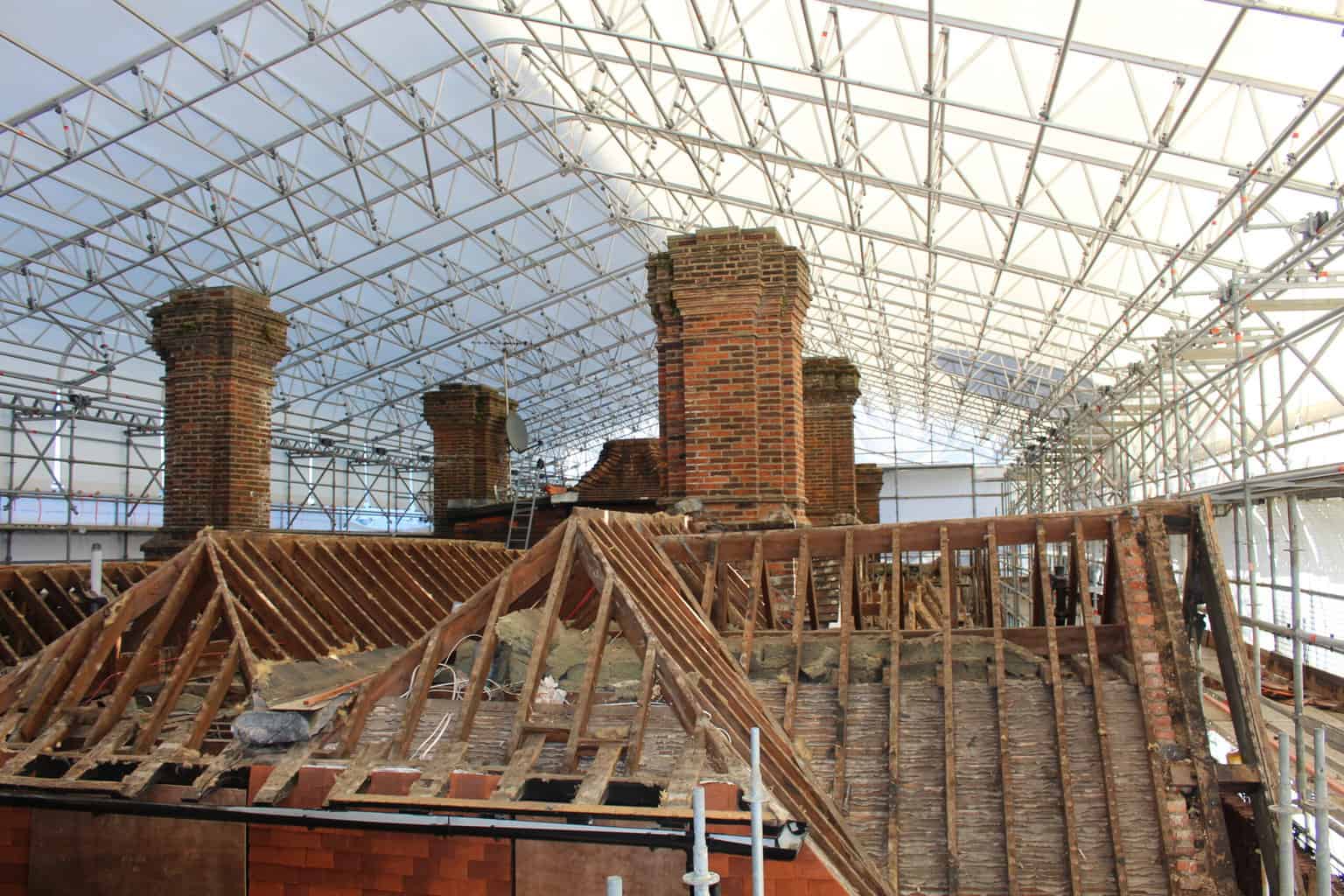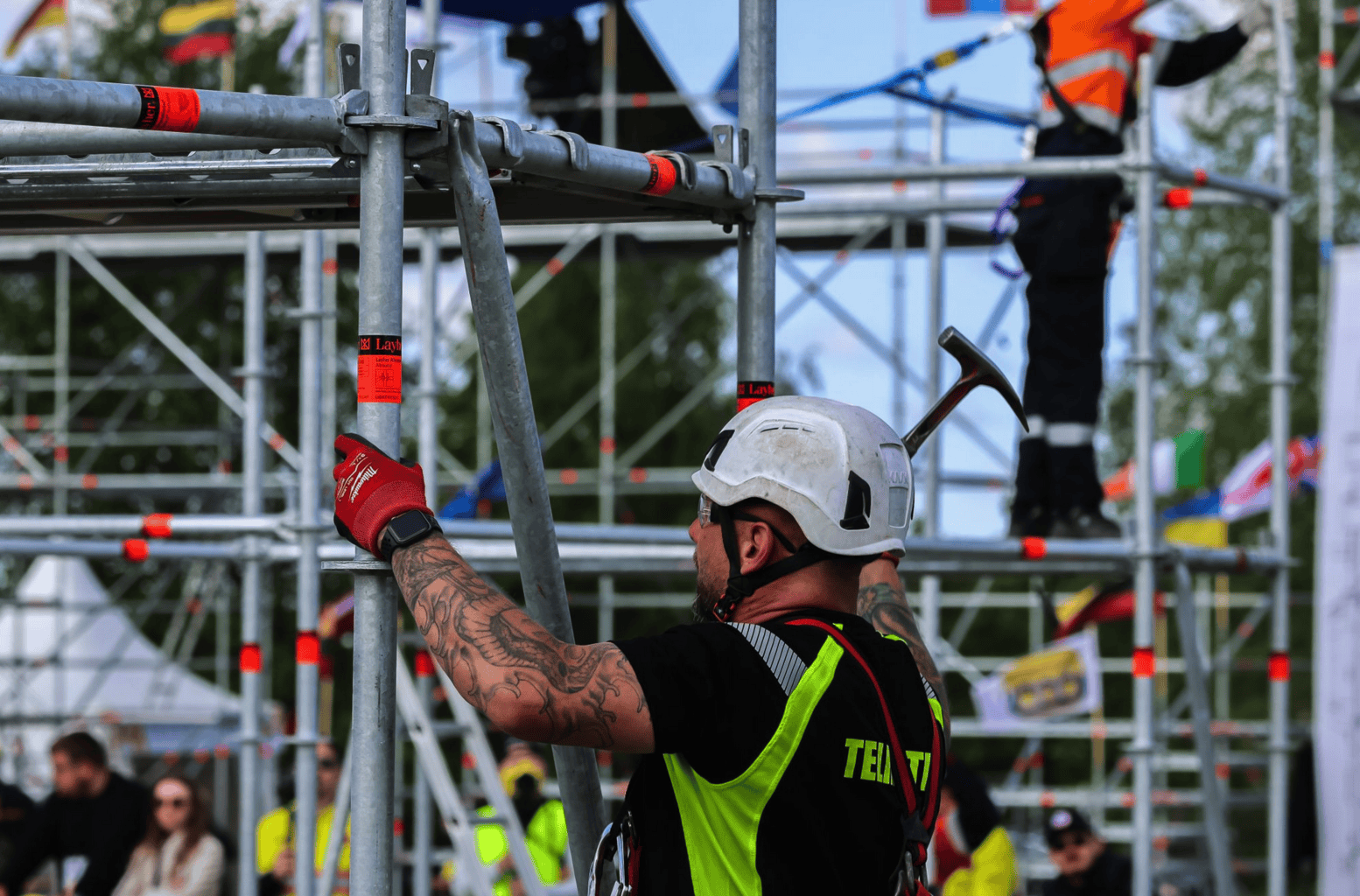In an ambitious restoration effort, the London Temple of the Church of Jesus Christ of Latter-Day Saints in Newchapel, Surrey, known as the Manor House, is witnessing a historic transformation.
Entrusted with the monumental task is Fast Fix Scaffolding, in partnership with Clarke Roofing Southern Ltd as the main contractor, embarking on a 35-week journey to renew the building’s roof and vertical tiling.
At the heart of this project’s success is the strategic use of the Layher Allround System, facilitated by Fast Fix Scaffolding’s expertise, underscoring the vital role of innovative system scaffolding in historic preservation.
The Challenge
With its intricate design and historical significance, the Manor House presented unique challenges. The requirement was twofold: to execute a comprehensive roofing restoration and ensure the building remained operational throughout the process. The scaffolding setup was critical, designed to provide access to the roof and vertical tiling while protecting the building from weather damage during the works.
Sean Elliott, Managing Director of Fast Fix Scaffolding, highlighted the complexities, “The size of the clear span for the temporary roof was a significant challenge. Yet, the Layher Keder Roof XL System, supported by Layher UK’s engineering expertise, offered a seamless solution.”
The Layher Solution
For the project, Fast Fix Scaffolding chose Layher’s world-famous Allround Modular Scaffold system and its Keder Rolling Roof for their reliability and flexibility. The system’s ease of installation and capacity to span large areas without compromising structural integrity influenced this choice.
Elliott added, “The entire scaffold, with its protective sheeting and the temporary roof, was a testament to the Layher System’s capability to adapt to the demanding needs of historic restoration.”
Execution and Innovation
Throughout the scaffold build, Fast Fix Scaffolding’s innovative thinking was evident. The Manor House’s constrained access and operational requirements led to the strategic use of smaller scaffold components.
Due to the limited access, with height and width restrictions, smaller scaffold components were employed on the project to ensure these could be unloaded and distributed through a limited archway entrance by a small telescopic forklift to eliminate manual handling as far as was reasonably practicable.
This approach, coupled with Layher UK’s design expertise, ensured a seamless installation process. “The collaboration between Fast Fix Scaffolding, Clarke Roofing, and Layher was instrumental in navigating the project’s challenges, from logistical constraints to ensuring safety and public access,” Elliott noted.
Outcome and Reflections
As the broader project continues, the scaffold and temporary roofing stand as a testament to the effectiveness of the Layher Allround Scaffolding System. The complex tiling and maintenance work continues under the protection and accessibility provided by the scaffold, ensuring the Manor House’s legacy for years to come.
Elliott reflected on the project, “This project reaffirmed the importance of pre-planning and collaboration. The Layher System, particularly the Keder Roofing XL System, was instrumental in our ability to deliver a high-quality solution efficiently.”
Conclusion
The restoration of the Manor House at the London Temple of the Church of Jesus Christ of Latter-Day Saints is more than a construction project; it’s a preservation of history. Through the innovative use of the Layher System, Clarke Roofing Southern Ltd and Fast Fix Scaffolding have demonstrated how modern technology can be harmoniously integrated with historic preservation, setting a benchmark for future restoration projects.
The success of this project lies not only in preserving a building but also in advancing scaffolding solutions for complex architectural endeavours.







